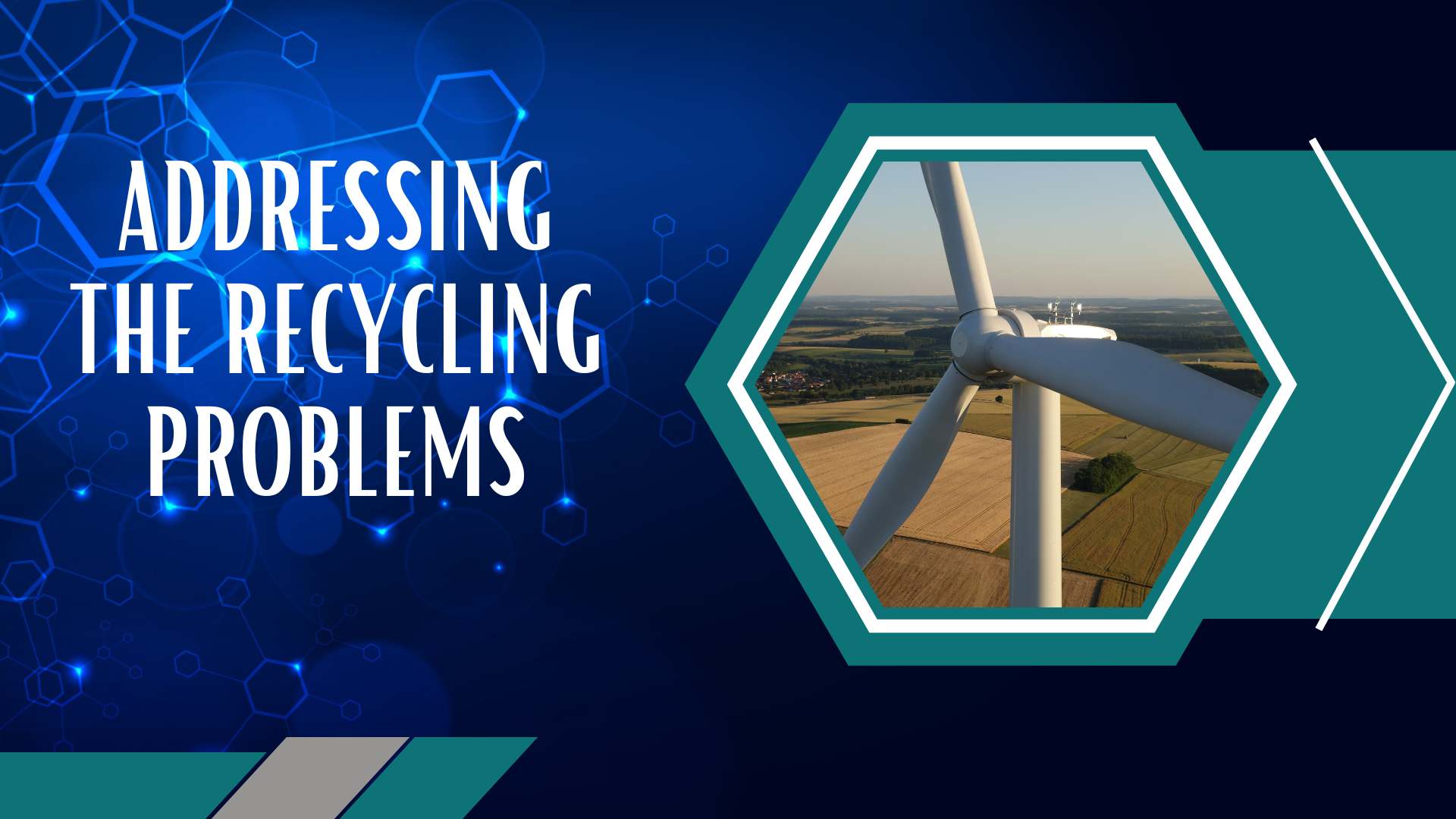Addressing the Recycling Problems
The Recycling Problems of Wind Turbines
Wind power has emerged as a crucial component of the global renewable energy transition, with wind farms sprouting across landscapes worldwide. However, as wind turbines reach the end of their operational lifespan, proper recycling and disposal become pressing concerns. The recycling of wind turbines presents unique challenges due to their size, complex composition, and the need to handle hazardous materials. Let’s explore the problems associated with wind turbine recycling and delve into the innovative solutions being developed to address this issue sustainably.
The Challenge of Wind Turbine Recycling
a. Size and Disposal: Wind turbines are massive structures, often standing over 100 meters tall with blades spanning 40-60 meters. Their sheer size poses challenges for transportation, dismantling, and disposal. Proper recycling facilities and methods are required to handle these enormous structures safely and efficiently.
b. Complex Composition: Wind turbines consist of various materials, including metals (such as steel, aluminum, and copper), fiberglass, carbon fiber, and composites. The complex composition makes it difficult to separate and recycle these materials effectively.
c. Hazardous Materials: Wind turbines contain hazardous materials, such as lubricating oils, hydraulic fluids, and rare earth elements in the magnets of the generator. These substances require careful handling and disposal to avoid environmental contamination and health risks.
Innovative Solutions: Developing Effective Wind Turbine Recycling Techniques
To address the challenges of wind turbine recycling, researchers, manufacturers, and recyclers are actively developing innovative solutions. These initiatives aim to minimize waste, maximize material recovery, and reduce the environmental impact. Here are some promising approaches:
a. Material Separation and Recovery: Advanced recycling technologies are being developed to separate and recover valuable materials from wind turbines. Techniques such as mechanical shredding, sorting, and chemical processes enable the extraction of metals, fiberglass, and other components. These materials can be recycled or repurposed for various industries, reducing the need for virgin resources.
b. Design for Recycling: Manufacturers are increasingly focusing on designing wind turbines with recycling in mind. This involves using more easily recyclable materials, improving component design for disassembly, and incorporating labeling and identification systems to aid in the recycling process. Design for recycling ensures that wind turbines are more readily dismantled and recycled at the end of their operational life.
c. Collaborative Industry Efforts: The wind power industry is working together to establish comprehensive recycling programs. Manufacturers, operators, and recycling facilities are collaborating to develop standardized procedures for decommissioning, dismantling, and recycling wind turbines. These collaborations aim to create efficient supply chains and closed-loop recycling systems.
d. Research and Development: Ongoing research focuses on developing advanced recycling methods and technologies for wind turbines. Innovations include chemical processes to recover rare earth elements. Also exploring new composite materials that are more easily recyclable, and investigating circular economy concepts for wind turbine components. Research and development efforts are vital for driving improvements in the recycling of wind turbines.
Addressing the Recycling Problems. Policy Support and Extended Producer Responsibility
Governments play a crucial role in promoting wind turbine recycling through supportive policies and regulations. Extended Producer Responsibility (EPR) programs can incentivize manufacturers to take responsibility for the end-of-life management of wind turbines. Governments can enforce recycling targets, establish clear regulations for wind turbine disposal, and provide financial incentives to promote the development of recycling infrastructure. EPR programs ensure that manufacturers actively participate in sustainable waste management and recycling efforts.
Challenges and Opportunities
While significant progress is being made in wind turbine recycling, several challenges remain:
a. Logistics and Infrastructure: The transportation and handling of large wind turbine components require specialized equipment and facilities. Developing a robust recycling infrastructure capable of handling these components at scale is a challenge that requires investment and coordination.
b. Economics and Financial Considerations: The economic viability of wind turbine recycling is a key consideration. The costs associated with transportation, dismantling, and recycling must be balanced against the value of recovered materials. Continued innovation and economies of scale will help drive down costs and make wind turbine recycling more economically feasible.
c. Lifecycle Assessment and Planning: Implementing effective recycling practices requires considering the entire lifecycle of wind turbines from the design stage. Lifecycle assessment and planning enable better end-of-life management. Ensuring that materials and components are recyclable, and facilitating efficient dismantling and recycling processes.
Addressing the Recycling Problems. Global Collaboration and Knowledge Sharing
International collaboration and knowledge sharing play a vital role in advancing wind turbine recycling practices. By sharing best practices, research findings, and technological advancements, countries and industry stakeholders can collectively drive improvements. What’s more, accelerate the development of sustainable recycling solutions for wind turbines.
Addressing the challenges of wind turbine recycling is crucial for the long-term sustainability of the wind power industry.
Through innovative recycling techniques, collaborative efforts, and supportive policies, we can minimize waste, maximize resource recovery, and reduce the environmental impact of wind turbines.
Designing wind turbines with recycling in mind, developing advanced recycling technologies, and establishing comprehensive recycling programs are key steps toward a circular economy for wind power. By embracing sustainable recycling practices, we can ensure the continued growth and environmental benefits of the wind energy sector. While minimizing waste and maximizing resource efficiency.
If you are interested in recycling Your solar modules or investing in solar farms in Poland, don’t hesitate to get in touch with us at +48 797 897 895 or biuro@lighthief.com
Read about solar asset management in Poland.
Also, read about Solar Investments in Poland.
Read about Poland’s solar farms industry.
Also, about Chinese solar investors in Poland.
Read about O&M services on solar farms.

